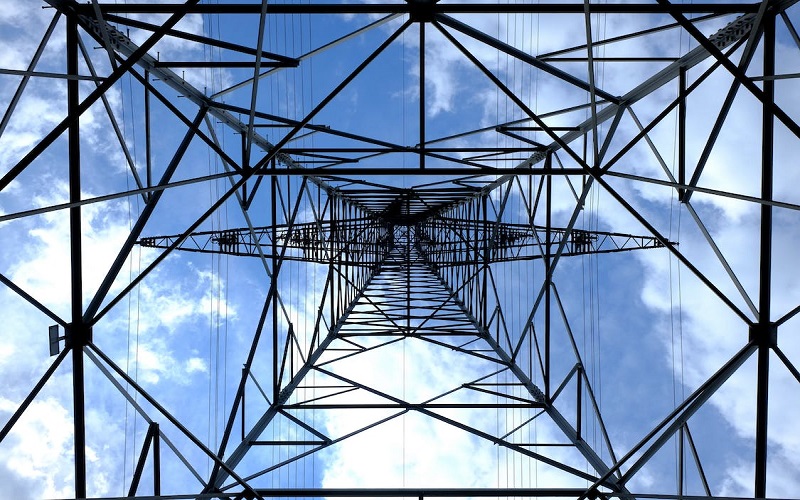Guest Author: Kaitlyn Albertoli, CEO and co-founder, Buzz Solutions
Burnout has been an oft-discussed topic of late, a byproduct of pandemic pressures that have forced workers to adapt to increased stressors, leading many to reach their breaking point. Burnout is also top of mind right now for the utilities industry but with a different worker in mind – the grid.
The backbone of our power grid is supported by major physical infrastructure. This infrastructure includes towers, poles, generation stations, and lines spanning millions of miles, sending electricity at incredibly high speeds from place to place. Much of this transmission and distribution infrastructure was constructed over half a century ago, with some components even dating back to the 1920s. Since that time, little has changed with our grid’s structure, but our reliance on electricity has surged. This creates immense pressure as the grid continues to age, and the need to upgrade our infrastructure has never been more important.
Major Factors Accelerating the Grid Evolution
While other industries play whack-a-mole with scaling challenges, the utilities sector is playing whack-a-

whale. There are major factors accelerating the utilities infrastructure upgrade (and they are happening concurrently), including (1) preparing for significant (and inevitable) climate change events; (2) the ongoing aging of the grid system at higher rates; and (3) the electrification of everything. In the last several years, West Coast wildfires, midwest heat waves and political incentives to build infrastructure that supports renewable energy like EV charging stations, have strained the power grid’s capacity.
The best weapon in a utility’s arsenal is data, critical information on asset performance and potential weaknesses. Thanks to powerful new IOT (Internet of Things) sensors and smart meters, utilities have been drinking from a firehose of data for years now. In many places, they are collecting 5-10x the data of historical levels, resulting in hundreds of thousands and millions of images annually. The big problem has become how to analyze and manage this influx of data in an optimized manner so that utilities can act preemptively.
Four Ways Utilities Can Prepare for the Future
As the industry continues its transformation, there are several ways utilities leaders can pave the way through maintenance and resilience planning, including:
Improve Baseline Knowledge
Assets are the lifeblood of the energy sector, and utilities have a huge backlog in maintenance work, even to perform normal functions. Improving the path to maintenance requires a better understanding of asset health. Meaning, in order to innovate, first you need to understand what’s happening.
Despite the massive amount of available data, ironically much of the current maintenance backlog is a result of massive amounts of available data. That’s because the bulk of the repetitive data analysis is still done manually by linemen and field technicians, which is a highly-tedious and unscalable process. While so much data is being collected of the assets themselves, it takes significant time before the data is analyzed, a report can be drafted, and actual maintenance can be conducted. Across the board, there needs to be a more holistic picture of all assets. Utilities are still in the early phases of scaling comprehensive inspection programs using drones and as such, the industry is just starting to see significant uptick in data collection. More autonomous inspections and improved technology will enable an even greater capacity for inspection work. As site inspections improve (using more autonomous methods like drones or predictive machine learning), utilities will be able to act faster and more efficiently.
Integrate ADMS
In an effort to streamline all of their data, utilities have continued integrating ADMS (Advanced Distribution Management System), a digital system that collects data from multiple sources and aids in optimization. As the Department of Energy (DoE) explains, “an ADMS transitions utilities from paperwork, manual processes, and siloed software systems to systems with real-time and near-real-time data, automated processes, and integrated systems.”
As utilities move to collect more data from within the line and outside of the line, there is a stronger need to bring these datasets together in a productive manner. By working towards a more predictive and autonomous operation, utilities can ease the more unnecessary burdens placed on the grid and hasten the energy transition.
Increase Energy Capture & Storage
When you drive down the highway and see wind turbines, you might notice some are spinning and some are not. Those that are not spinning are curtailed, which means the turbines are producing excess energy the grid cannot handle. There is an ongoing conversation in the industry around load management (the process of the utility balancing the supply of electricity in the network) and demand response (which gives customers the ability to control supply through smart grid switches), but in either scenario, it makes no sense to waste an available opportunity to generate electricity. .
There are problems here which need to be solved: increasing energy storage duration and energy storage capacity. Increasing energy storage capacity at site facilities is a “no-regrets” move that can reduce the stress and strain on a grid that wasn’t meant to handle all of this volume in the first place.
Involve Humans
Human-in-the-loop (HITL) is an approach to artificial intelligence (AI) that leverages both human and machine intelligence in the creation of machine learning models. This process is especially critical for utilities due to the unique situations that can occur at their sites – from unexpected anomalies to nuanced regional insights. By including insight from on-the-ground technicians, the AI is building off a much more realistic data set and can model better solutions.
The Grid of the Future
As companies (and regulators) continue to advance our electrified future, we must take steps to alleviate the stress on the grid through increased maintenance and resilience. Because when workers are burnt out, they take time off – but there’s no vacation for the grid.

Kaitlyn Albertoli is CEO and co-founder of Buzz Solutions. Prior to founding Buzz Solutions with her co-founder Vik Chaudhry in 2017, Kaitlyn ran a non-profit focused on sustainable food with 60 people overseeing the needs of 300 people. She was previously a wealth management analyst at JP Morgan Chase. Kaitlyn was named to Forbes 30 under 30 in 2021. She studied international relations and finance at Stanford University, where she received her B.A.










